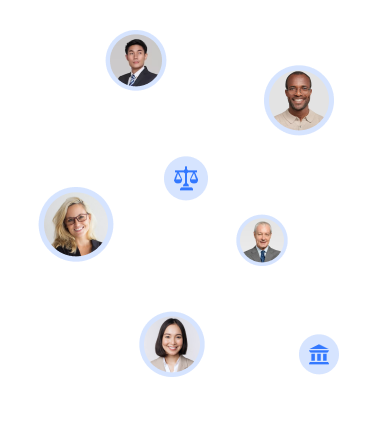Are you an inventor in Florida looking to safeguard your brilliant ideas?
We will explore the different ways you can protect your inventions, from patents to trademarks and copyrights.
Learn about the steps you need to take to ensure your creations are legally protected in the Sunshine State and common mistakes to avoid.
Discover how to secure your intellectual property in Florida!
Key Takeaways:

- Conducting a patent search is crucial in protecting your inventions in Florida, as it helps identify potential issues and avoid potential legal disputes.
- Filing for a provisional patent application provides temporary patent protection while the regular application is being processed, giving you more time to secure your invention’s full patent rights.
- Registering for a trademark or copyright is essential for protecting your invention’s brand and originality, respectively, and should not be overlooked as it can prevent infringement and strengthen your legal rights.
What Are the Steps to Protect Your Inventions in Florida?
Protecting inventions in Florida requires several crucial steps to legally recognize and safeguard intellectual property. Key actions include consulting with an intellectual property attorney, conducting comprehensive searches, and completing required registrations to navigate the intricate legal terrain.
1. Conduct a Patent Search
Performing a patent search is the initial step in safeguarding your invention, ensuring its uniqueness and absence of infringement on current patents. A thorough patent search is vital during the research and development stage as it assists in evaluating the novelty and inventiveness of your concept. By reviewing existing patents, you can pinpoint potential obstacles and refine your innovation to distinguish it in the market.
Leveraging various tools and databases, such as the United States Patent and Trademark Office (USPTO) website, can simplify the search process and offer valuable insights into the competitive environment. The USPTO plays a crucial role in helping withventors by providing resources and guidance on patent laws and regulations, ultimately facilitating the successful protection of intellectual property.
2. File a Provisional Patent Application
Submitting a provisional patent application serves as an initial step in obtaining patent protection, offering inventors a one-year period to refine their invention before filing a complete application.
During this timeframe, inventors can disclose their invention freely without forfeiting their rights or concerns about competitors stealing their concept. This enables them to evaluate market potential, gather feedback, and implement any necessary enhancements.
The submission of a provisional patent application establishes a priority date for the invention, which can be crucial in legal disputes or when pursuing international protection. The process entails providing a comprehensive description of the invention to the United States Patent and Trademark Office (USPTO), outlining its key features and functionalities.
3. File a Non-Provisional Patent Application
A non-provisional patent application is the formal submission for patent protection, requiring detailed documentation and adherence to legal standards.
This process involves drafting a thorough description of the invention, including how it works and its unique features. Accurate and comprehensive drawings or diagrams illustrating the invention’s design are crucial. Legal documents such as claims, an abstract, and an oath or declaration must also be meticulously prepared.
The United States Patent and Trademark Office (USPTO) has specific criteria for patent applications, necessitating clarity, specificity, and compliance with patent laws. Filing a non-provisional patent application demands precision and attention to detail to enhance the chances of successful patent approval.
4. Register for a Trademark
Obtaining a trademark provides protection for your brand name, logo, or package design, giving you exclusive rights to use it in the marketplace.
The process of securing a trademark involves several steps, starting with a thorough search to ensure the selected mark is unique and available for registration.
Following the search, the application process includes providing detailed information about the mark and its intended use. After submission, the Patent and Trademark Office reviews the application to assess compliance with necessary requirements.
Having a registered trademark offers multiple benefits, including legal protection against infringement and the opportunity to establish brand recognition and trust with consumers. A unique trademark plays a crucial role in distinguishing your products or services from competitors, aiding in creating a strong and memorable brand identity.
5. Register for a Copyright
Obtaining a copyright protects original creative works, like literature, music, and art, giving the creator exclusive rights to their use and distribution.
The copyright registration process typically entails submitting an application to the Copyright Office, along with a copy of the work being registered and the necessary fee. Once the copyright is registered, the creator receives a legal document confirming ownership and exclusive rights to reproduce, distribute, display, and perform the creation.
The Copyright Office plays a critical role in maintaining public records of copyrighted works and offering legal protection for authors and creators. By safeguarding intellectual property, copyright laws promote innovation and creativity by ensuring that creators are duly rewarded for their work.
6. Implement Confidentiality Agreements
The implementation of confidentiality agreements is essential for safeguarding trade secrets and proprietary materials, ensuring the security of sensitive information.
Confidentiality agreements serve as a legal framework for protecting valuable information shared between parties. These agreements typically define the scope of confidential information, the responsibilities of each party regarding the handling of the information, and the consequences of breaching the agreement. In case of a breach, there can be significant legal ramifications, including potential lawsuits, financial penalties, and harm to reputation.
By adhering to best practices such as restricting access to confidential materials, implementing security measures, and regularly reviewing and updating agreements, organizations can enhance the protection of their trade secrets and retain a competitive advantage in the market.
What Are the Common Mistakes to Avoid When Protecting Your Inventions?
When protecting intellectual property, avoiding common mistakes is crucial to ensure that inventions receive the full legal protection and financial benefits they deserve. Neglecting important steps such as conducting a thorough patent search or failing to file for necessary protections can put rights at risk and leave innovations vulnerable.
1. Not Conducting a Patent Search
Failure to conduct a patent search can result in costly legal disputes and the risk of infringing on existing patents.
The consequences of skipping a patent search are significant, as it may lead to unintentional infringement on the intellectual property rights of others, resulting in financial penalties and harm to one’s reputation. To perform a comprehensive search, individuals can utilize various tools such as online patent databases, search engines, and professional patent search firms.
These resources aid in identifying existing patents, ensuring that any new innovation does not violate established intellectual property. The Patent and Trademark Office plays a critical role in this process by granting patents and maintaining a public record of existing protected inventions.
Research and development are crucial elements in avoiding legal issues, as they allow individuals or companies to innovate confidently and navigate the complex realm of intellectual property rights.
2. Not Filing for a Provisional Patent Application
Not submitting a provisional patent application could result in a delay in protecting your invention and potentially expose it to competitors.
Failing to take the necessary steps to secure a provisional patent puts innovators at risk of losing exclusive rights to their creation, making it susceptible to exploitation.
Without a provisional patent application, the invention’s monetization potential may be hindered as investors and partners could be wary of engaging without proper protections in place.
The process, overseen by the Patent and Trademark Office, involves submitting detailed documentation of the invention, allowing individuals to establish an early legal framework that safeguards their intellectual property. Ultimately, applying for a provisional patent offers inventors a critical advantage in the competitive landscape of innovation.
3. Not Registering for a Trademark or Copyright
Failure to register for a trademark or copyright exposes brand names and creative works to potential infringement.
Without adequate legal protection, competitors or individuals could easily replicate innovative ideas, products, or services without repercussions. Trademark registration ensures the uniqueness and distinctiveness of a brand in the market, thereby enhancing its value and credibility.
Likewise, securing a copyright protects artistic expressions, literary works, or software codes from unauthorized use, granting exclusive rights to reproduce, distribute, and display creations. This protection is crucial for businesses and creators seeking to retain a competitive advantage and preserve originality in the industry.
4. Not Implementing Confidentiality Agreements
Failure to implement confidentiality agreements can lead to the loss of trade secrets and proprietary materials, which can diminish your competitive edge.
Confidentiality agreements are essential for protecting sensitive information within an organization. By establishing guidelines for handling proprietary data, these agreements ensure that employees and partners comprehend the significance of maintaining confidentiality.
Apart from safeguarding trade secrets, these agreements also safeguard intellectual property and confidential business strategies from unauthorized disclosure. Violating confidentiality agreements can result in serious legal repercussions, such as legal action, financial penalties, and harm to a company’s reputation.
To uphold security, it is crucial to routinely review and revise confidentiality agreements to align with current business practices and potential risks.
Frequently Asked Questions
What steps do I need to take to protect my inventions in Florida?
To protect your inventions in Florida, you will need to first conduct a thorough patent search to ensure your invention is unique and not already patented by someone else. Once you have confirmed your invention is eligible for patent protection, you can file a patent application with the United States Patent and Trademark Office (USPTO).
What are the different types of patents available in Florida?
There are three main types of patents available in Florida: utility patents, design patents, and plant patents. A utility patent protects the functionality or usefulness of an invention, while a design patent protects the aesthetic appearance. A plant patent is specifically for new and distinct plant varieties.
Do I need to hire a lawyer to protect my inventions in Florida?
While it is not a legal requirement to hire a lawyer to protect your inventions in Florida, it is highly recommended. Patent law can be complex and having an experienced lawyer on your side can greatly increase your chances of successfully obtaining a patent for your invention.
How long does a patent last in Florida?
A utility or plant patent in Florida typically lasts for 20 years from the date of filing, while a design patent lasts for 15 years. It is important to note that maintenance fees may be required to keep the patent in force during this time.
Can I protect my invention in Florida without a patent?
Yes, there are other forms of protection for inventions in Florida, such as trade secrets and trademarks. However, these forms of protection may not offer the same level of protection as a patent and may be more difficult to enforce.
What do I do if someone infringes on my patented invention in Florida?
If someone is using, making, or selling your patented invention in Florida without your permission, you can take legal action against them. This may include sending a cease and desist letter, filing a lawsuit, or seeking damages for the infringement.


























Rate this article:
Average rating 0 / 5. Vote count: 0
No votes so far! Be the first to rate this post.
No Comments yet!